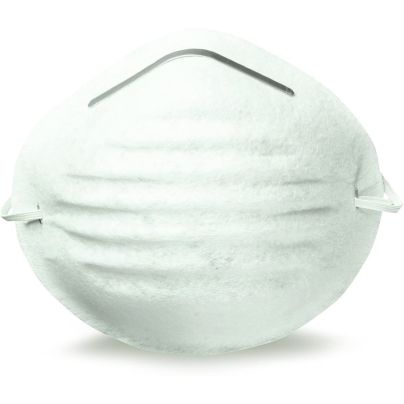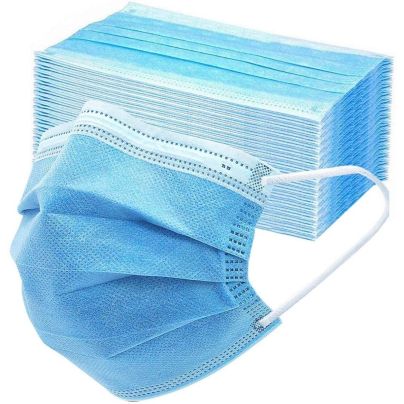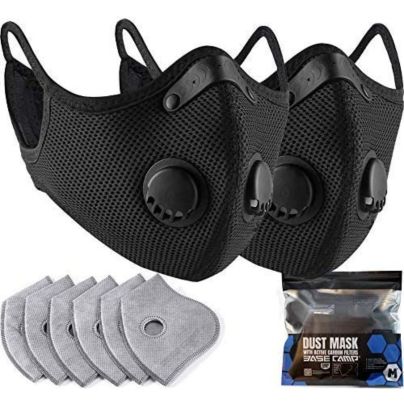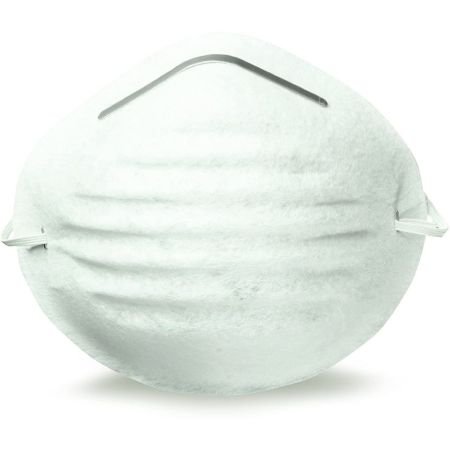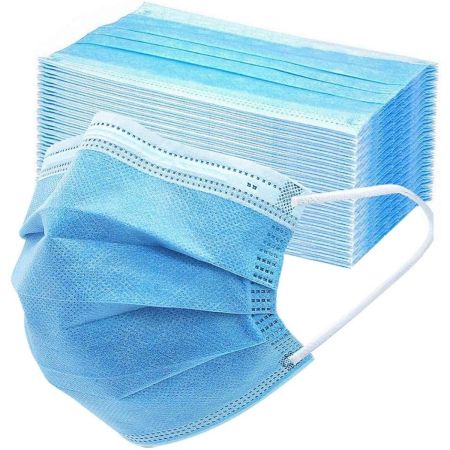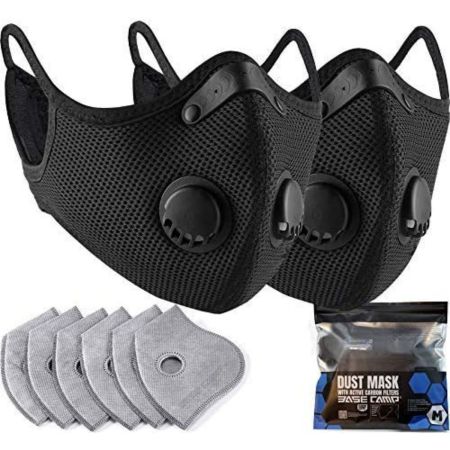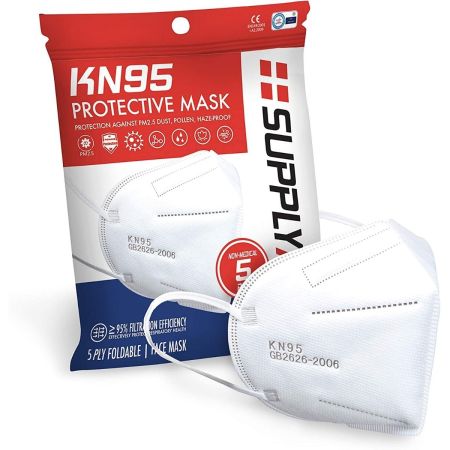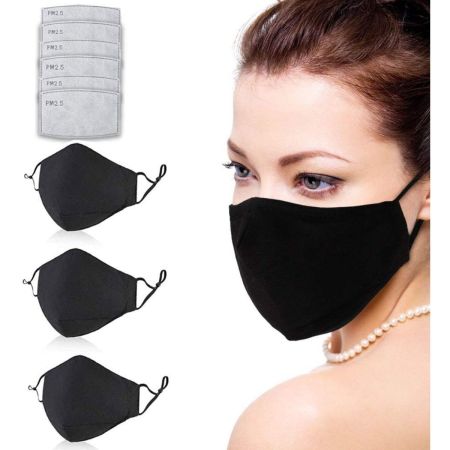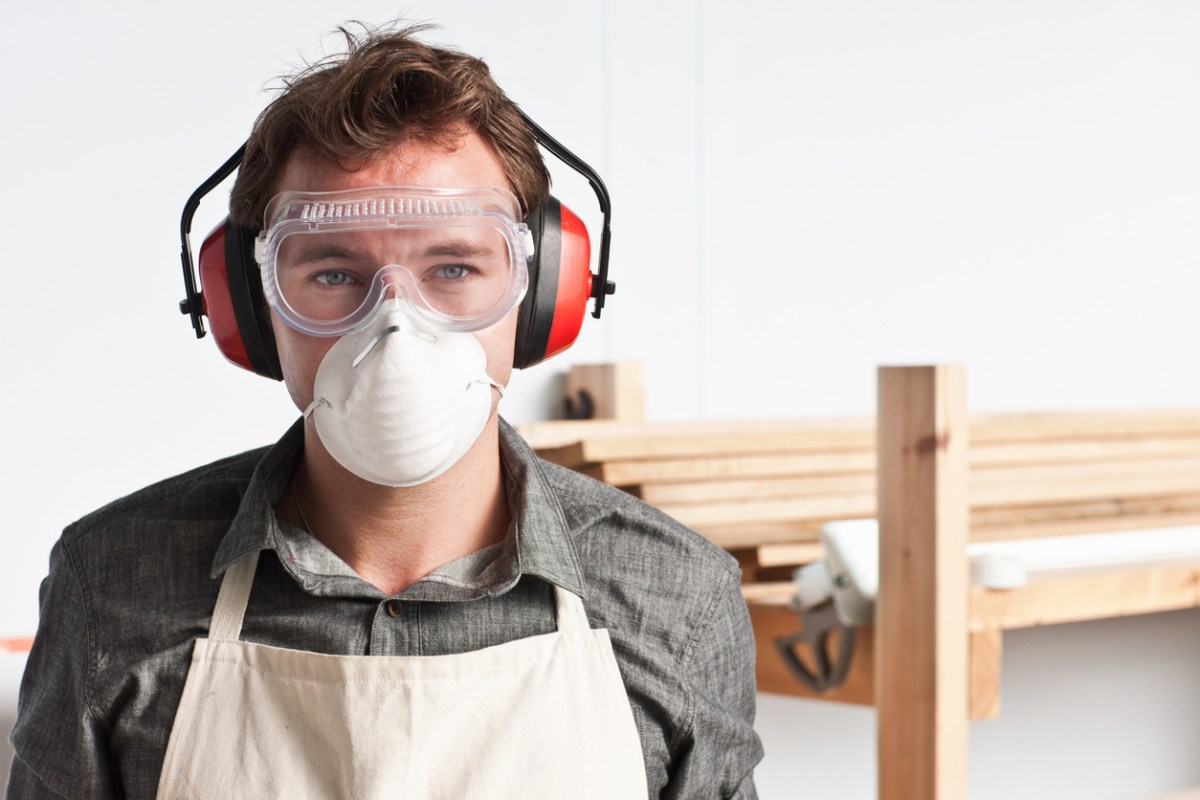
We may earn revenue from the products available on this page and participate in affiliate programs. Learn More ›
Creating something with your hands, whether it’s woodworking, painting, renovating, or any other creative pursuit, can be a fulfilling experience. The only problem is that DIY projects can sometimes fill your lungs with dust and contaminants.
Protecting your lungs from these airborne particles requires wearing a high-quality dust mask. Dust masks catch small dust particles on their surface or in a filter, allowing you to breathe freely. If your dust mask becomes an integral part of your workshop safety protocol, you’ll be able to stand back and admire your finished project without coughing or sneezing. Read on to learn more about how to choose the best dust mask for your workshop.
- BEST OVERALL: Honeywell Nuisance Disposable Dust Mask
- BEST BANG FOR THE BUCK: Asofcof Disposable Anti-Dust Protective Cover Mask
- BEST REUSABLE: BASE CAMP M Plus Dust Mask 2 Pack
- BEST FOR SMALL PARTICLES: SupplyAID KN95 Protective Mask
- BEST FOR GLASSES WEARERS: OTTOP Adjustable Full Face Protection Masks

Before You Buy Dust Masks
There’s a distinct difference between the best dust masks and the best respirators. As a general rule, a respirator can serve as a dust mask (though it may be overkill), but a dust mask cannot serve as a respirator.
Dust masks are not approved by the National Institute of Occupational Safety and Health (NIOSH) as disposable filtering devices. They’re excellent for keeping non-toxic nuisance dust on the outside, such as dust from woodworking or from sweeping your garage floor.
Many respirators, however, are approved by NIOSH. Although they can look similar to a standard dust mask, NIOSH-approved respirators filter out up to 95 percent of toxic pollutants. They’re important for chemicals, spray paints, and virus protection. But they’re more expensive than dust masks and often unnecessary if you’re primarily concerned about airborne dust particles.
What to Consider Choosing the Best Dust Masks
Before you start comparing the best dust masks for your project or needs, there are a few points worth reading up on. This section highlights some of the most important features and aspects that go into choosing the best dust masks.
Disposable vs. Reusable
While there are lots of masks available, they break down into two main categories: Disposable and reusable.
Disposable masks are one-and-done products—once worn, disposable masks should be thrown away as they become clogged with dust and make breathing more difficult. You can attempt to blow them clean with compressed air, but they’re affordable, so it’s best to start over with a new mask.
Reusable dust masks come in several variants—their construction can be as simple as a plain fabric mask or include disposable filters for added protection. Manufacturers design most reusable masks so wearers can throw them in the laundry or wash them by hand. Masks with replaceable filter cartridges require a filter change and a good wiping with an alcohol pad.
Material
Just as there are many types of masks available, the materials they come in vary just as much.
In general, disposable dust masks consist of paper or synthetic plastic fibers. These materials make them affordable while still being effective enough to protect the user’s lungs. They aren’t particularly durable, as many have elastic straps that weaken with use.
Reusable masks are a different story. Manufacturers often use durable synthetic materials that are lightweight and easy to clean while still allowing the user to breathe freely. Some reusable masks, particularly those made by smaller manufacturers, are fabric-based. Users can hand wash them between uses without worrying about durability.
Filter Percentage
If you’re using a respirator, there may be a letter-number designation listed on the box and the filter. This designation describes the types of particles the mask is effective against and the percentage of particles it can filter.
The most common respirators feature N95 designations, which means they’re effective against 95 percent of non-oil particles. There are also N-99 masks, which are effective against 99 percent of non-oil particles.
Non-NIOSH-approved masks don’t have percentages to describe their effectiveness as they’re only effective against nuisance-type dust. In general, this includes sawdust, airborne dirt from cleaning, sheetrock dust, and other typical construction and hobby-related dust.
Particle Size
The scientific world measures tiny particles by microns. Microns are equal in length to one-millionth of a meter, making them well under the size visible by the human eye.
NIOSH-approved respirators have specific criteria they need to meet in order to receive approval. To test the particle size a mask will filter, NIOSH uses an aerosol form of sodium chloride (NaCl). To receive approval, an N95 respirator must be 95 percent effective at filtering NaCl particles .3 microns and larger in size. Some manufacturers actually exceed this benchmark, designing their masks to filter NaCl particles as small as .1 microns.
NIOSH Certification
For a mask to protect against aerosol particles such as those involved in spray painting, chemical cleaning, or biological viruses, a NIOSH-certified mask is best. As touched upon earlier, this certification ensures that the mask will block the proper percentage of particles to remain safe.
Comfort
While safety is the most important consideration, comfort matters too. Here are some points to consider:
- Dust masks made from lightweight materials are easier to breathe through and are less likely to shift around while wearing them.
- High-end reusable masks often feature adjustable neck-straps, distributing their weight over a wider area.
- Masks with exposed rubber straps provide flexibility but may tug or pull at the wearer’s hair.
- Some masks have exhalation valves to minimize heat and moisture.
- Masks with anti-fog features help reduce steamy safety glasses.
- Adjustable nose clips create a secure seal while improving comfort.
Our Top Picks
This section, consisting of both disposable and reusable options, provides a list of some of the best dust masks on the market.
Best Overall
Honeywell Nuisance Disposable Dust Mask
For dusty projects such as woodworking, cleaning, and construction, the Honeywell Nuisance Disposable Dust Mask is up for the job. It features a lightweight, latex-free, and humidity-resistant filter that reduces breathing resistance and protects against non-toxic dust, pollen, mold, dander, and other common airborne irritants.
Each mask in this pack of 50 features stretchy elastic straps that wrap around the back of the head and neck, providing a comfortable and secure fit. The straps’ one-piece construction provides a bit of adjustability. The flexible nose clip bends around the nose to create a seal and reduce fogging on safety glasses.
Best Bang for the Buck
Asofcof Disposable Anti-Dust Protective Cover Mask
For a budget-friendly choice, check out Asofcof’s disposable face mask. This pack of 50 offers a very low cost per use. It protects against nuisance dust and can be worn while completing tasks such as woodworking, renovations, and cleaning.
Each mask features three layers of non-woven fabric filtration. They have elastic ear loops attached to the top and bottom of the mask, providing a comfortable fit while keeping the mask securely in place. There is a flexible nose clip that can bend to adjust the fit to the face for a custom seal.
Best Reusable
BASE CAMP M Plus Dust Mask 2 Pack
Looking for a comfortable reusable mask that provides plenty of protection? Take a look at this two-pack from BASE CAMP. These masks use nylon fabric and replaceable carbon filters to provide six layers of protection against dust and particles. They can filter out up to 99 percent of exhaust gases, dust, pollen, particles, and smoke. The pack comes with six filter replacements.
These masks feature ear loops and hook-and-loop neck straps to provide a comfortable and secure fit. The nose clips are flexible, conforming to the shape of the nose to create a proper seal and prevent fogging. These masks also feature two exhalation valves, improving breathability and allowing warm and moist air to escape.
Best for Small Particles
SupplyAID KN95 Protective Mask
SupplyAID’s protective mask filters out particles as small as 2.5 microns (100 times thinner than a human hair). It can filter against dust from common projects, pollen during allergy season, and haze and vapor caused by vehicle exhausts.
These disposable paper masks come in packs of five and feature sturdy elastic ear loops that attach at the top and bottom of the mask on each side. They have bendable nose clips, creating a better seal for optimal filtration. They also fold flat, so they’ll fit in a pocket or a glove box without issue.
Note that while SupplyAID’s masks can provide more protection than a standard dust mask, they are not approved for medical use.
Best for Glasses Wearers
OTTOP Adjustable Full Face Protection Masks
If there’s one complaint that most people with glasses have about their masks, it’s fogged-up glasses. OTTOPT’s masks, made of a breathable fabric and featuring a flexible wire to bend around the bridge of the wearer’s nose, help prevent the condensation and fog caused by poor seals and warm breath.
These fabric masks are machine washable. They feature four layers of dust and particle protection, including a replaceable carbon filter. The layers protect against nuisance dust, allergens, and odors. The ear loops feature a sliding stop to adjust their size for an ideal fit.
FAQs About Dust Masks
If you still have some questions about dust masks, here is a collection of some of the most frequently asked questions about the best dust masks. Be sure to check here to see if there’s an answer to your question listed below.
Q. What’s the difference between a dust mask and a respirator?
Respirators have to pass tests and meet certain criteria in order to receive NIOSH approval. Dust masks do not. Respirators are as effective as dust masks, but dust masks are not as effective as respirators.
Q. Are dust masks good for smoke?
Some dust masks may help filter light smoke, but only N95 or P100 respirators are proven to be truly effective.
Q. Do dust masks protect against viruses?
Dust masks are not proven to protect against viruses. They don’t filter out particles small enough to fight viruses.
Q. Are dust masks reusable?
Some are. Most paper masks are not reusable, while fabric masks can be washed and used over and over again.
